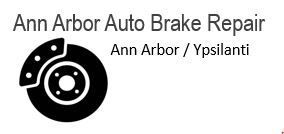What Does the Brake Repair Process Look Like?

Understanding the Brake Repair Process
Becoming familiar with our Brake Repair Process is important for you (our Customer), so that you become familiar with our process of repairing brakes and feel totally comfortable to ask any question you may have about brake repair process. There is no stupid question. Brakes are important systems to the proper operation of your vehicle, and your own personal safety, and so we will answer any and every question you may have.
The first step in our process is to chat with you and understand your concerns and experiences with your vehicle, and attempt to translate that into a procedure by which we can make adjustments or repairs to achieve proper function, feel, and performance of your vehicle brake system.
Once we have reviewed your concerns and shared our plan to review your vehicle braking system with you, we will determine a day and time to complete the service. There are many different services we provide in the Brake Repair process, one of which is the changing of worn brake pads and brake rotors.
The following process is an example of the process we follow when performing a brake pad and rotor change on your vehicle:
Importance Of Changing Your Brake Pads and Rotors:
Regular maintenance of your vehicle’s braking system is essential for safety and performance. Changing brake pads and rotors is a necessary task that, when done correctly, can improve your car's stopping ability and extend the life of your brake components.
Understanding the Components
Brake Pads: Brake pads convert kinetic energy into thermal energy through friction, slowing down your vehicle when the brake pedal is pressed.
Brake Rotors: The rotors are metal discs that work with the brake pads to create the necessary friction for stopping the vehicle. They can wear out over time due to heat and friction and may require replacement alongside the pads.
Step-by-Step Process
1. Prepare the Vehicle
- Park the Car: Ensure you park your vehicle on a flat surface and engage the parking brake.
- Gather Your Tools: Have all your tools and materials readily available.
2. Lift the Vehicle
- Loosen Lug Nuts: Use the lug wrench to loosen the lug nuts on the wheel you’re working on, but do not remove them yet.
- Raise the Vehicle: Use a jack to lift the vehicle off the ground, then place jack stands under the car to ensure stability.
- Remove the Wheel: Fully remove the loosened lug nuts and take off the wheel to expose the brake components.
3. Remove the Brake Caliper
- Locate the Caliper: The brake caliper is secured by bolts, typically located on the back side.
- Remove Caliper Bolts: Use the socket wrench to remove the caliper bolts and slide the caliper off the rotor.
- Support the Caliper: Do not let the caliper hang by the brake line; instead, use a bungee cord or rope to secure it to the suspension or frame.
4. Remove the Old Brake Pads and Rotor
- Take Out the Old Pads: Remove the old brake pads from the caliper bracket.
- Remove the Brake Rotor: If the rotor is not held in place by screws, it should slide off the wheel hub. If it’s stuck, you may need to tap it gently with a rubber mallet or use a rotor puller.
5. Install the New Rotor
- Clean the New Rotor: Before installation, use brake cleaner to remove any protective oils on the new rotor surface.
- Install the New Rotor: Slide the new rotor onto the hub, ensuring it is properly aligned.
6. Compress the Caliper Piston
- Use a C-Clamp: Insert the C-clamp or brake caliper tool between the caliper and the old brake pad (if you kept it) to compress the caliper piston. This creates enough space for the new, thicker pads.
- Remove the Old Pad: Once the piston is compressed, remove the old brake pad if you haven’t done so already.
7. Install New Brake Pads
- Install the New Pads: Slide the new brake pads into the caliper bracket, ensuring they are securely in place.
- Apply Anti-Seize (Optional): If desired, you can apply a small amount of anti-seize lubricant to the backing of the brake pads to help prevent noise and facilitate removal in the future.
8. Reattach the Brake Caliper
- Position the Caliper: Carefully slide the caliper over the new pads and rotor.
- Tighten Caliper Bolts: Reinsert the bolts and tighten them to the manufacturer’s specifications using a torque wrench. This step is crucial for the proper function and safety of the braking system.
9. Reinstall the Wheel
- Place the Wheel Back On: Position the wheel onto the hub and hand-tighten the lug nuts.
- Lower the Vehicle: Carefully lower the vehicle back to the ground.
- Torque the Lug Nuts: Once the car is back on the ground, use a torque wrench to tighten the lug nuts to the manufacturer’s specifications.
10. Final Checks and Testing
- Pump the Brake Pedal: Before driving, pump the brake pedal several times to ensure that the brake pads are properly seated against the rotors.
- Check Brake Fluid: Inspect the brake fluid reservoir and add fluid if necessary.
- Test Drive: Go for a short test drive at low speeds to ensure that the brakes feel firm and there are no unusual noises.
When to Get Brake Pads and Rotors Changed?
Changing brake pads and rotors is an essential maintenance task that can greatly enhance your vehicle’s braking performance. While it requires some mechanical knowledge and tool usage, with the right approach and attention to detail, it can be a manageable DIY project. Always prioritize safety by wearing protective gear and following proper procedures. If at any point you feel uncertain, consider seeking assistance from a qualified mechanic at
Ann Arbor Auto Brake Repair. Maintaining your braking system will ensure safety on the road and prolong the life of your vehicle's components.
